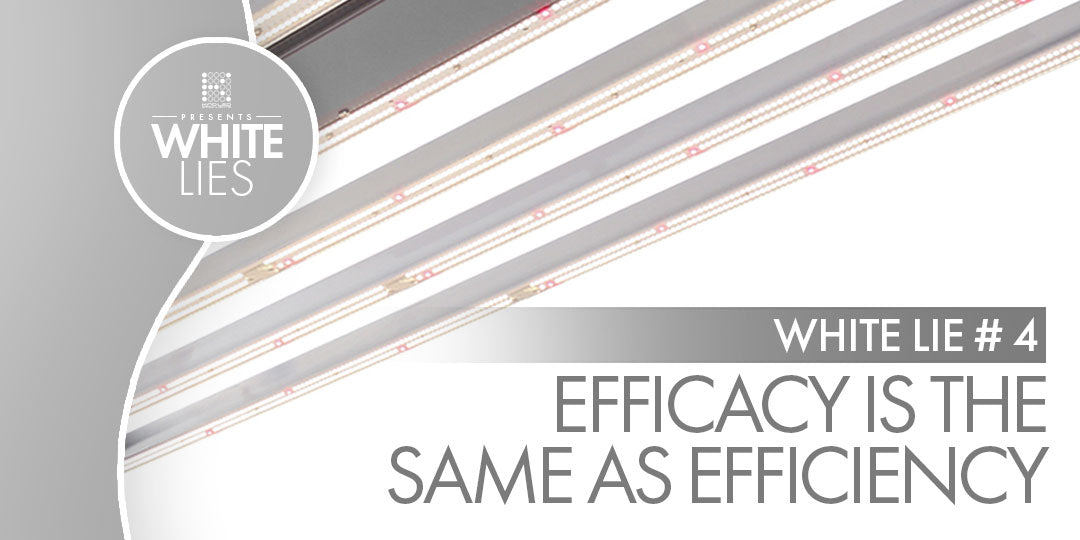White Lie #4: Efficacy is synonymous with efficiency

Welcome to a new blog series from Kind LED Grow Lights where we address some of the misinformation currently being spread by the white light LED manufacturers so prolific in the horticultural lighting industry. If you haven’t yet had the opportunity, please read the other posts in this series.
- White Lie #1: Efficacy is more important than PPFD
- White Lie #2: Efficacy is the single most important aspect of an LED Grow Light
- White Lie #3: Full-Spectrum white light is best for your plants
White Lie #4: Efficacy is synonymous with efficiency
As we’ve discussed in our previous posts, efficacy is a measurement of how effective a grow light is at converting electrical energy into photosynthetically active radiation. This is calculated by taking the PPF value and dividing it by the measurement of wattage (Joules per second). Therefore, efficacy measures exactly how much usable light a fixture produces every second per watt used. (µmol/J)
It’s no surprise that people find this confusing, as the words “efficacy” and “efficiency” share many of the same letters in more-or-less the same order. But efficacy and efficiency are not the same thing, especially when it comes to horticultural lighting.
White light LEDs are great at pumping out white light. After all, white light LEDs are used in every industry imaginable. But as we’ve discussed previously, white light includes an abundance of green and yellow light which plants can only use in limited quantities, and most of that green and yellow light winds up being reflected from the plant’s surface and turned into heat. So while these diodes are in fact good at producing white light, white light is not the ideal light for plants.
In this respect, white light LEDs, despite the fact that their efficacy value tends to be better than the alternatives, are less efficient than targeted-spectrum diodes. Decades of light science research have taught us some fundamental facts about how plants interact with light. We know that the blue part of the spectrum is most effective during the vegetative stage of a plant’s growth cycle, while red light is ideal for the flowering cycle. For this reason, reputable LED grow light manufacturers engineer their spectrum to focus on the parts of the spectrum that most benefit plants, not humans. Certain fixtures even allow the grower to adjust that spectrum throughout their plant’s life cycle, allowing growers unprecedented control over the growth of their plants.
Targeted-spectrum LED grow lights limit the amount of yellow and green light a fixture emits, which decreases the amount of energy wasted by the fixture, and consequently, the amount of heat produced. This in turn reduces the need for additional cooling measures needed in your grow environment and can lower utility bills significantly. Thus, targeted-spectrum LED grow lights are considerably more efficient than white light LED fixtures, even if their efficacy value might be lower.




